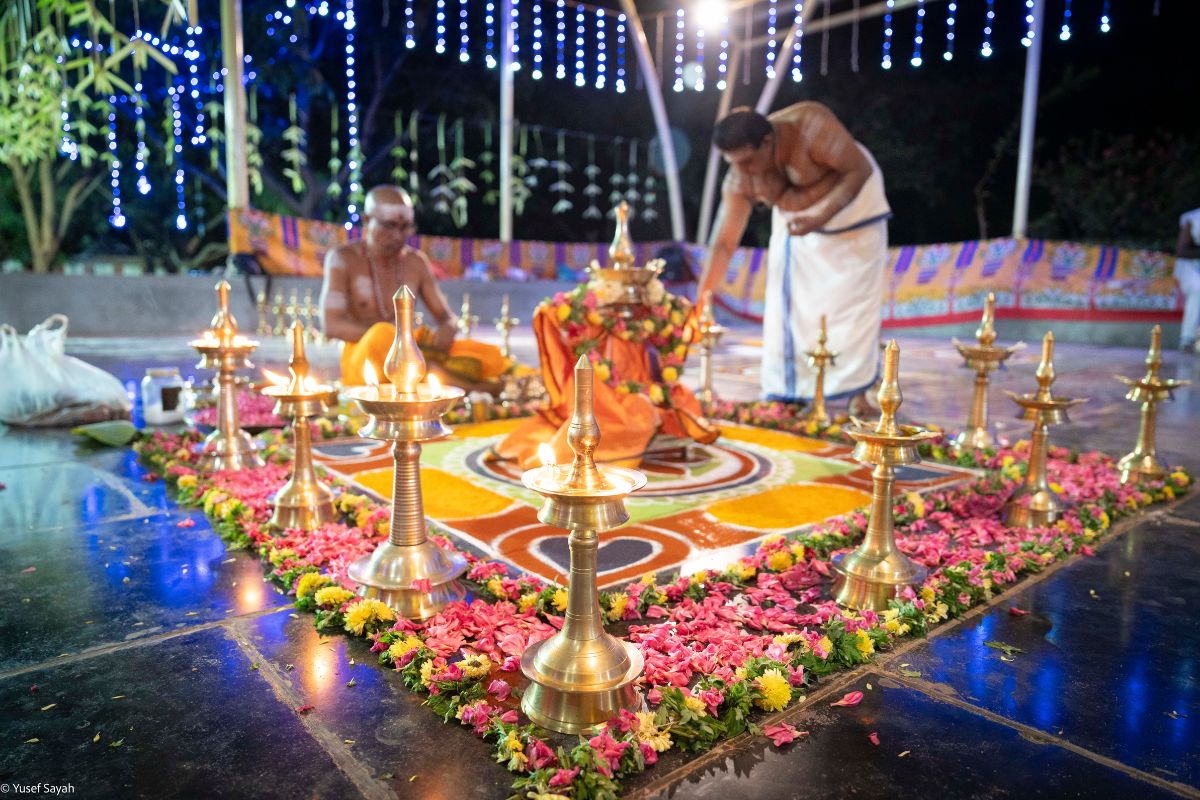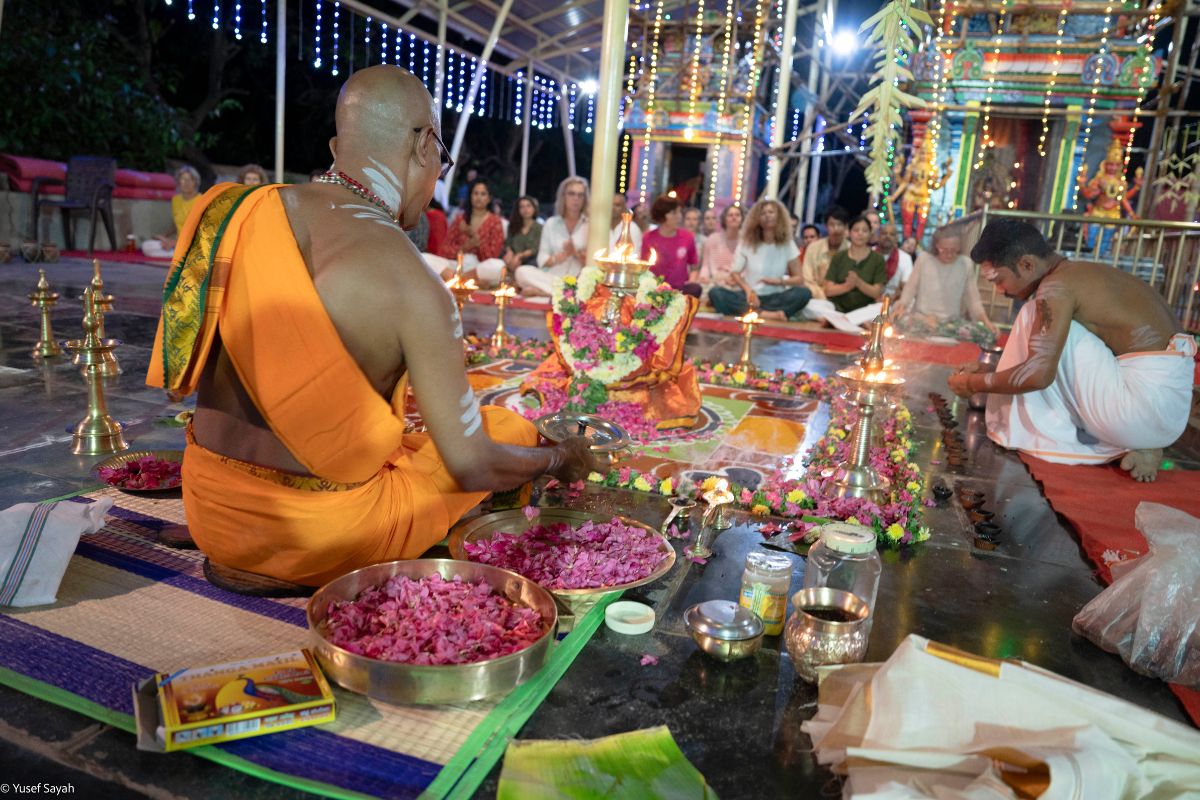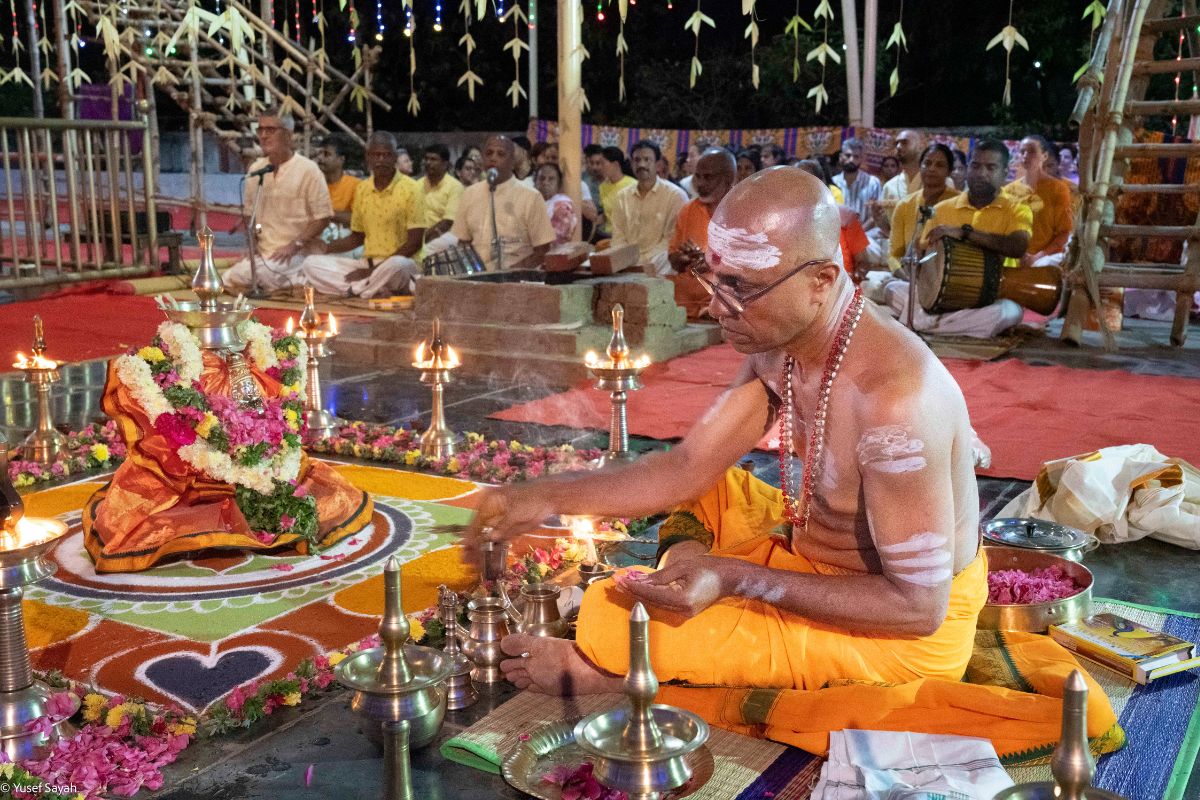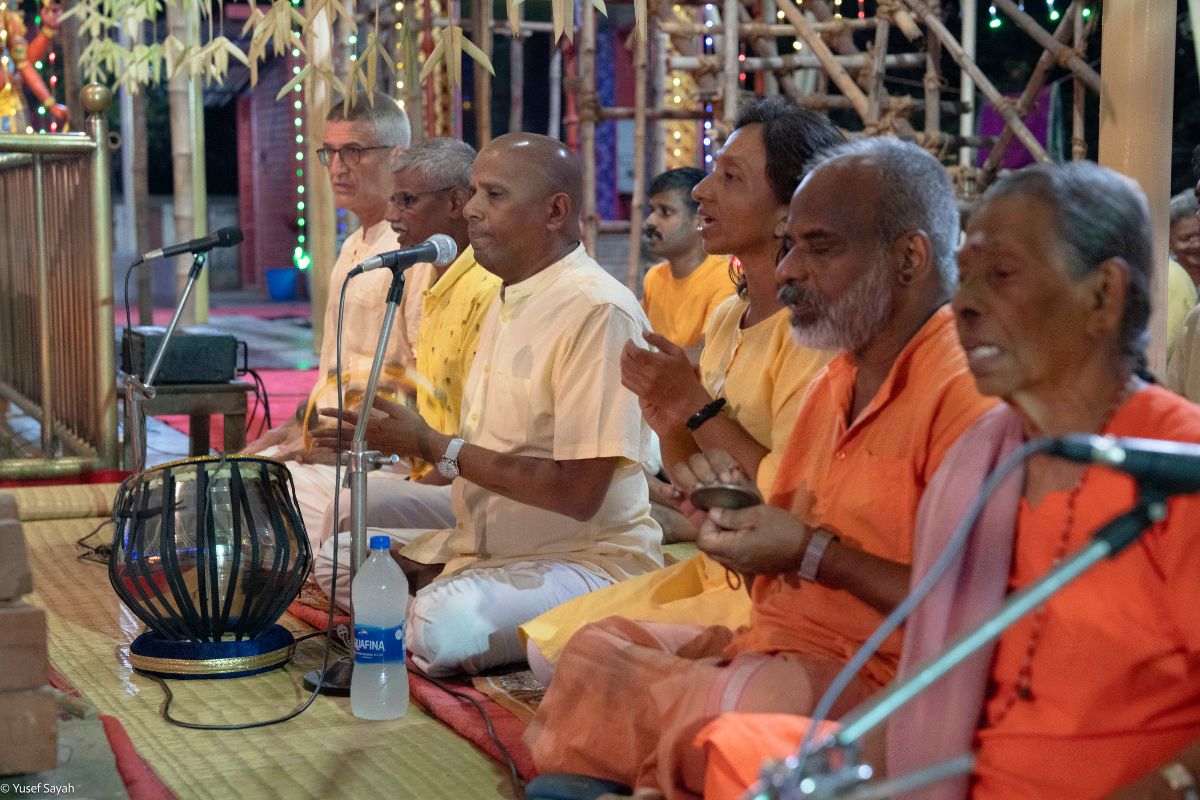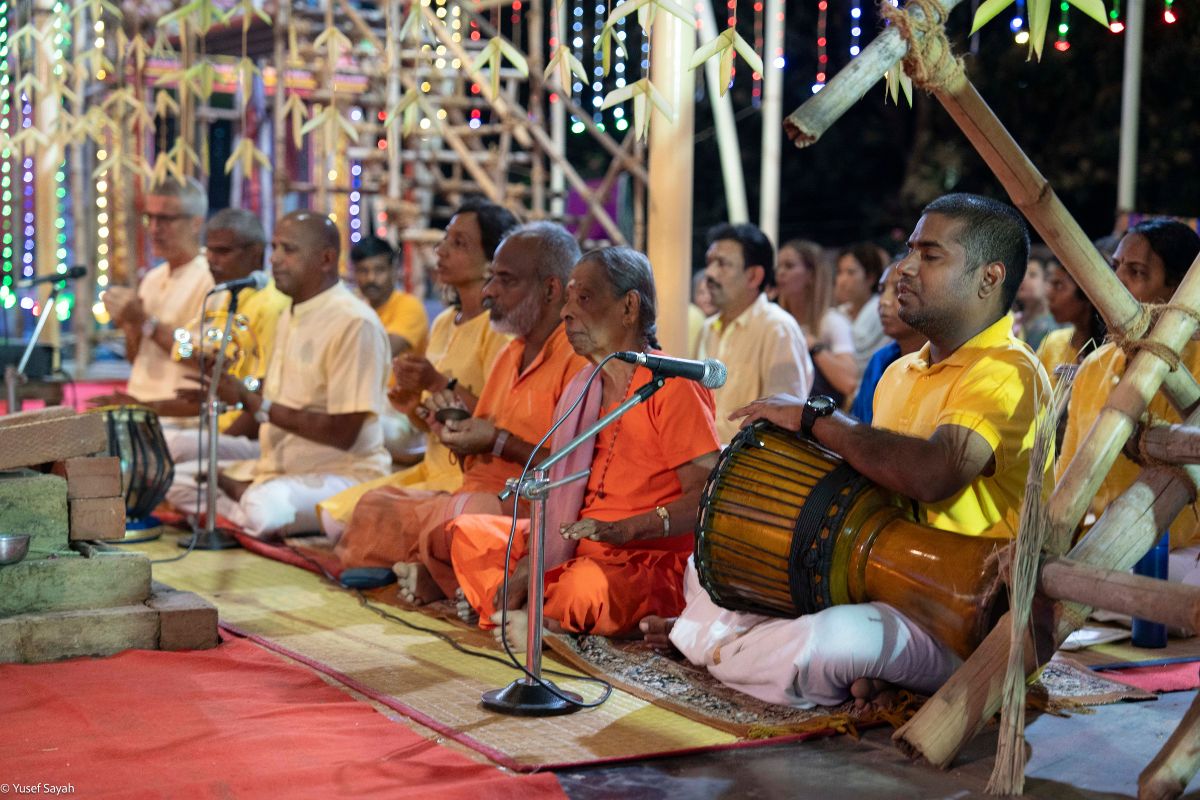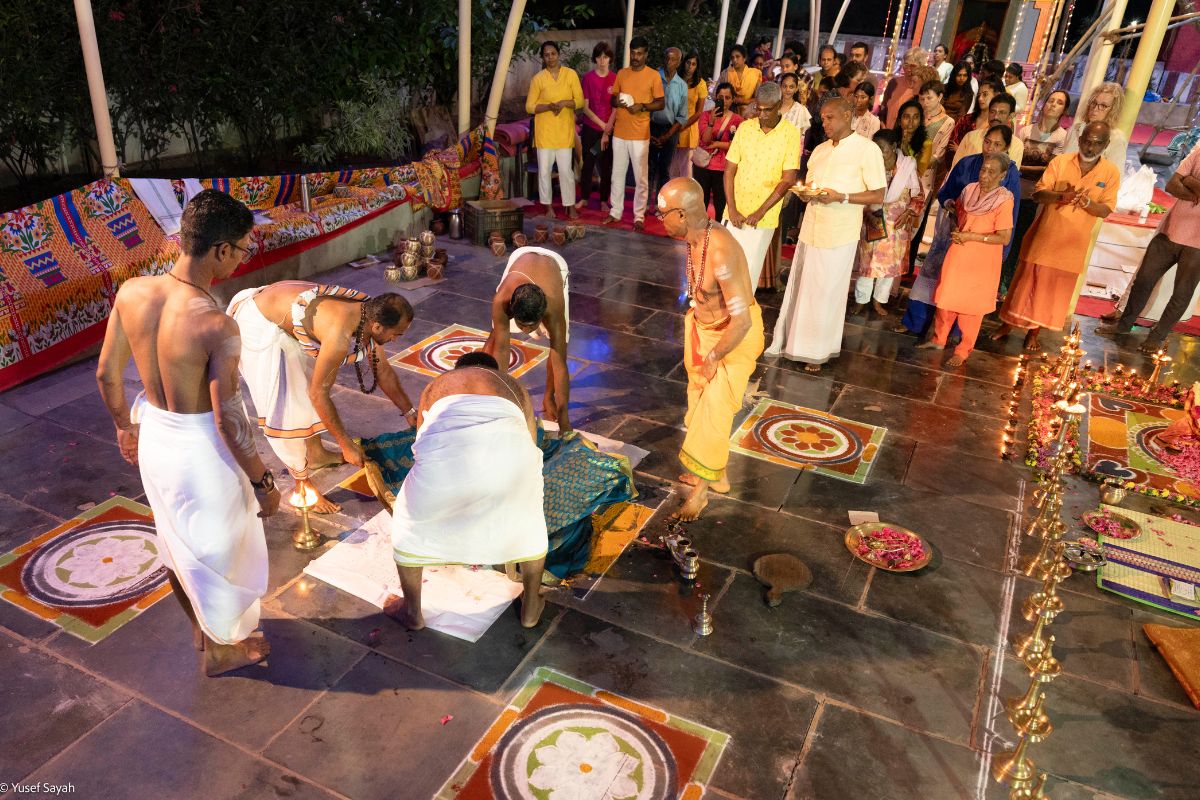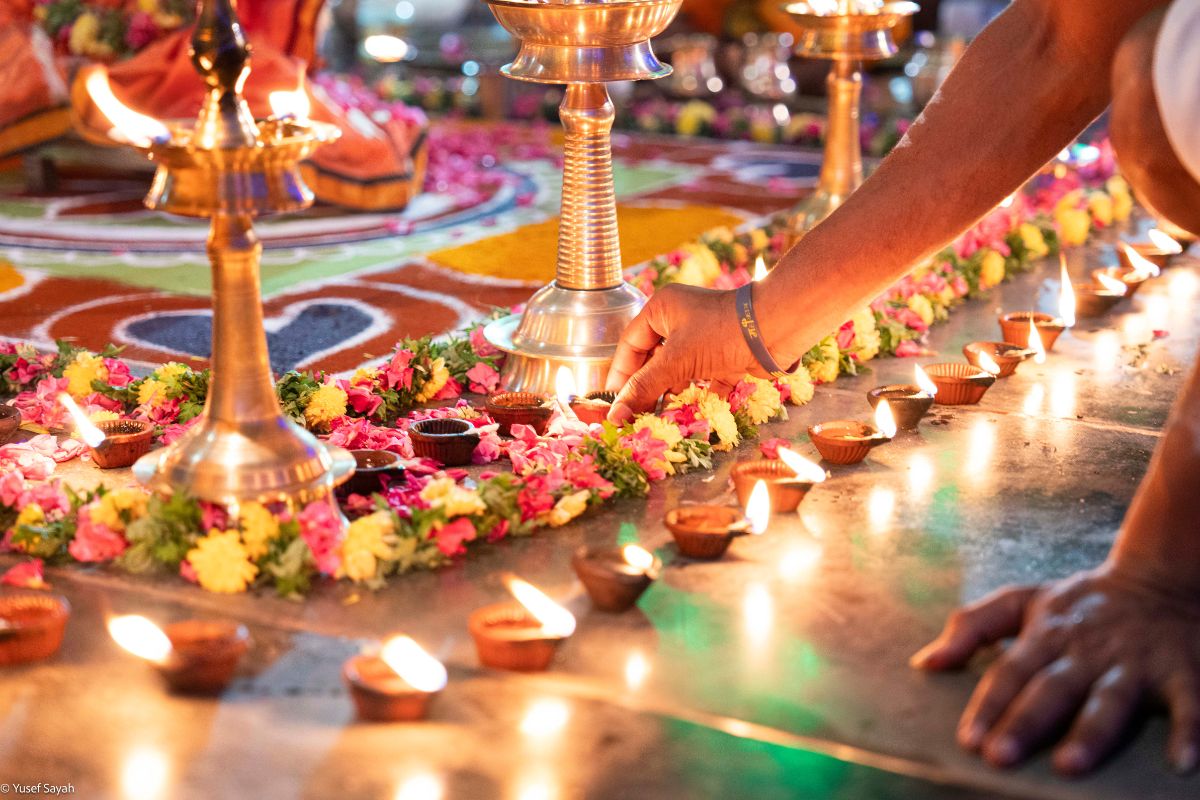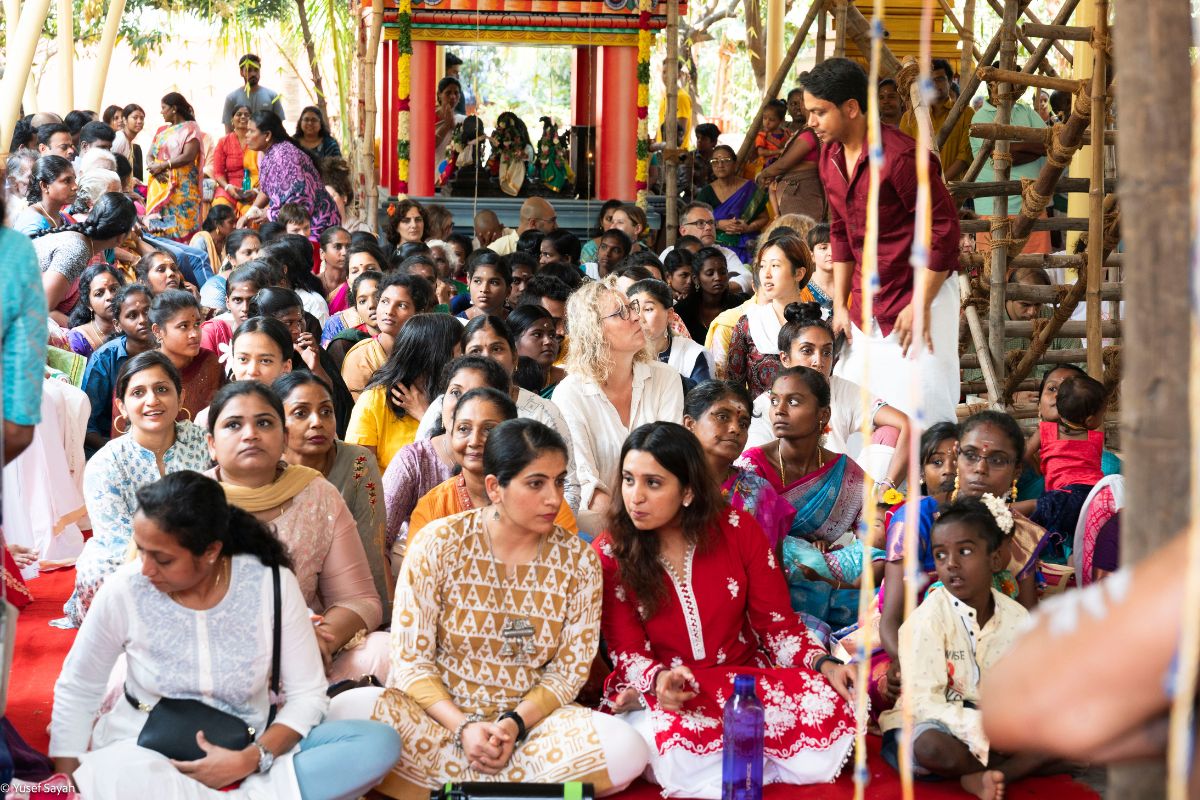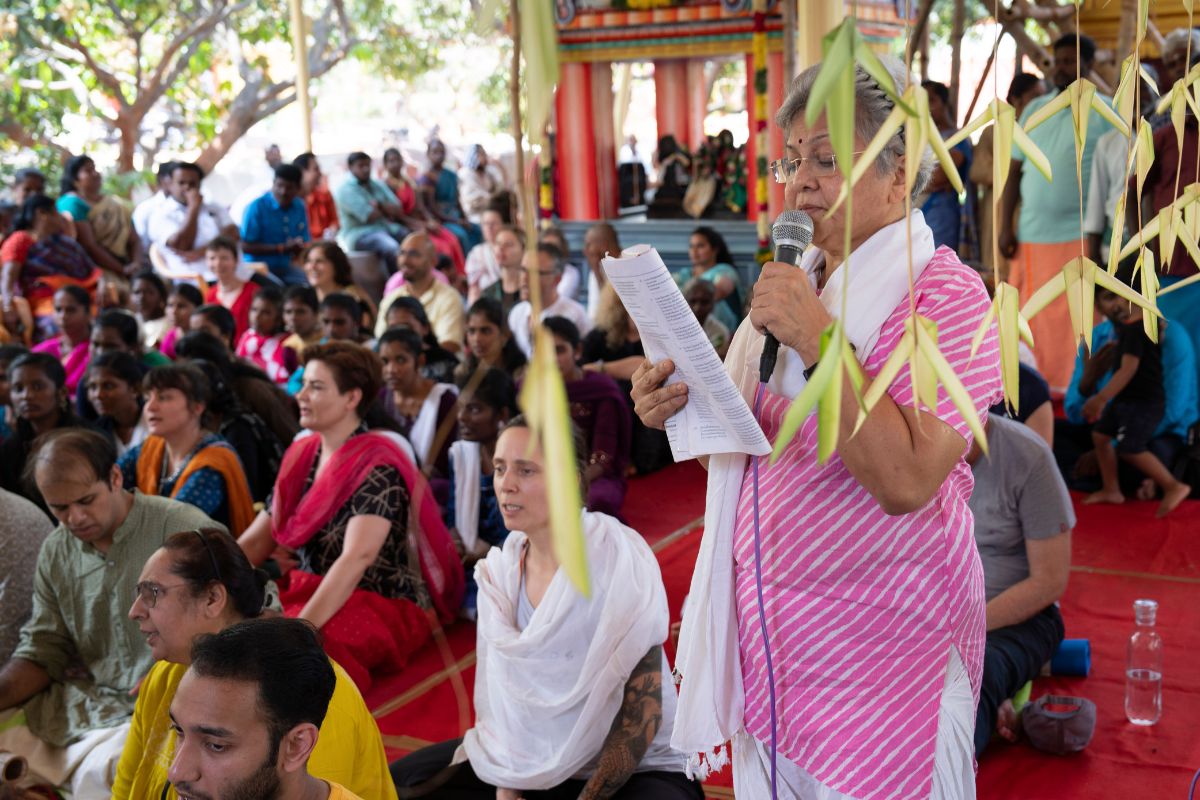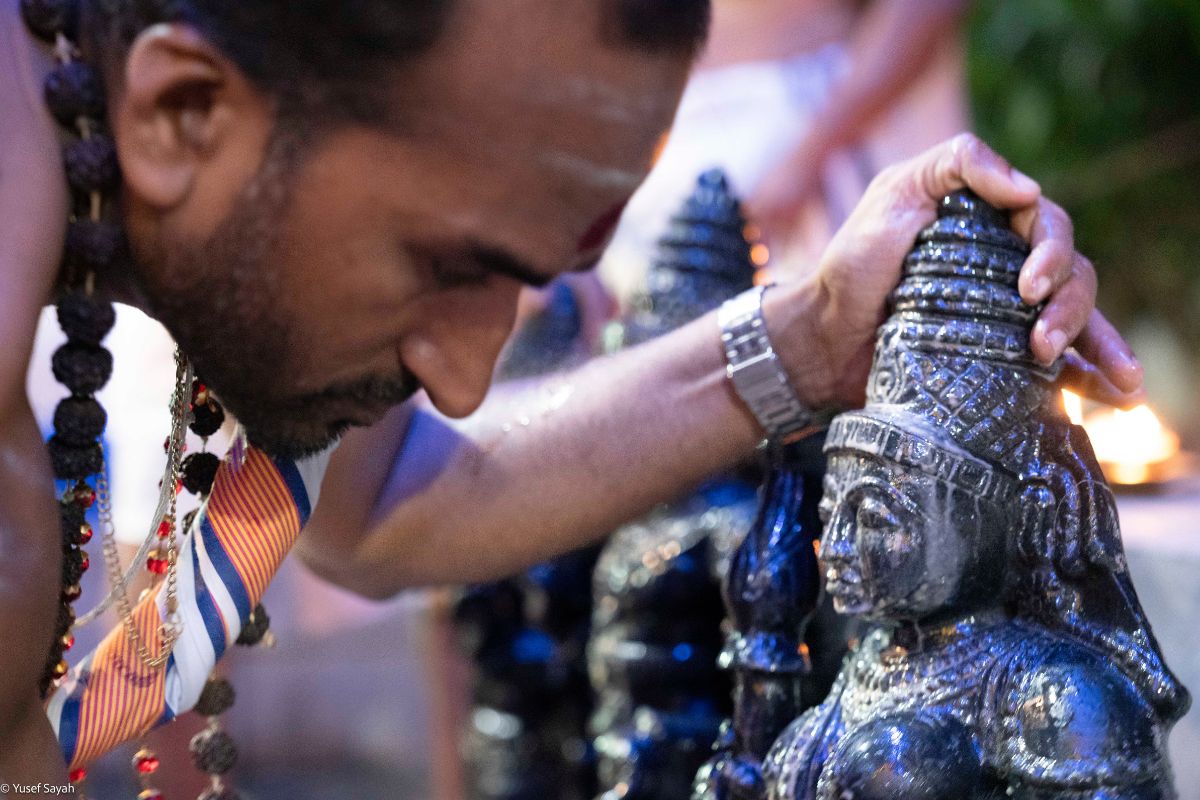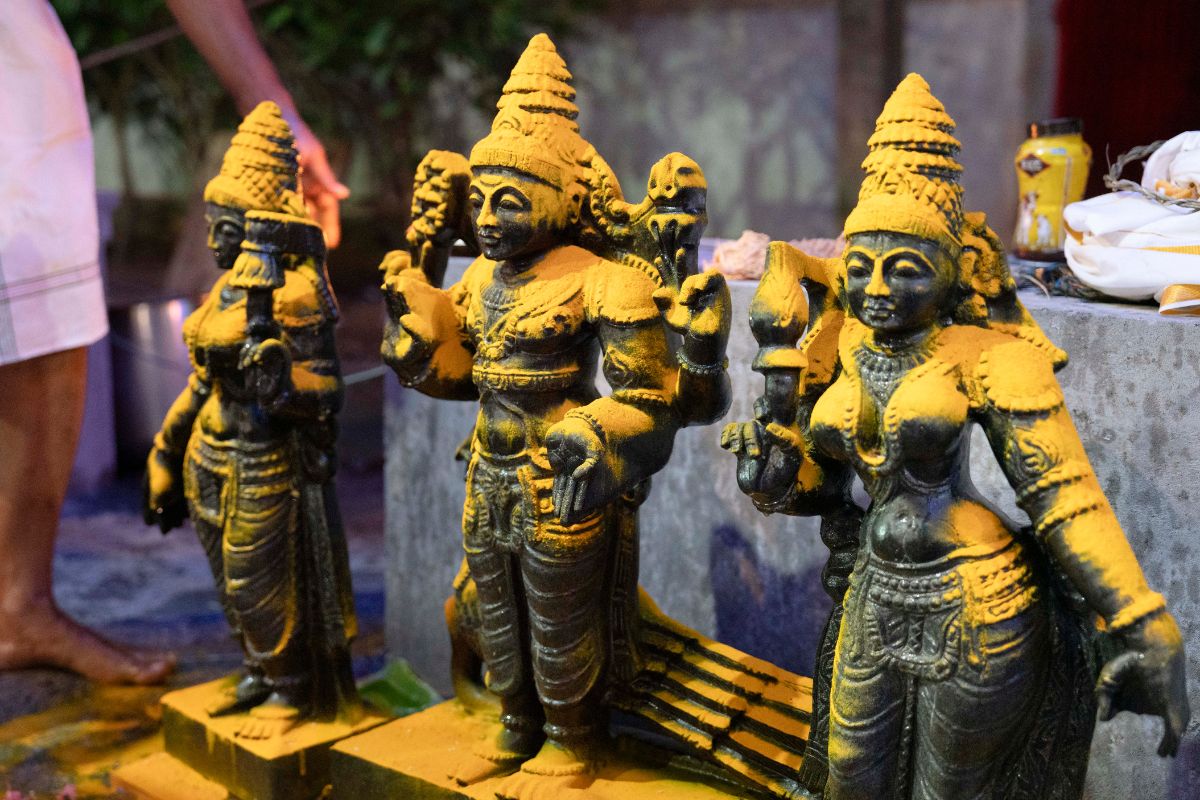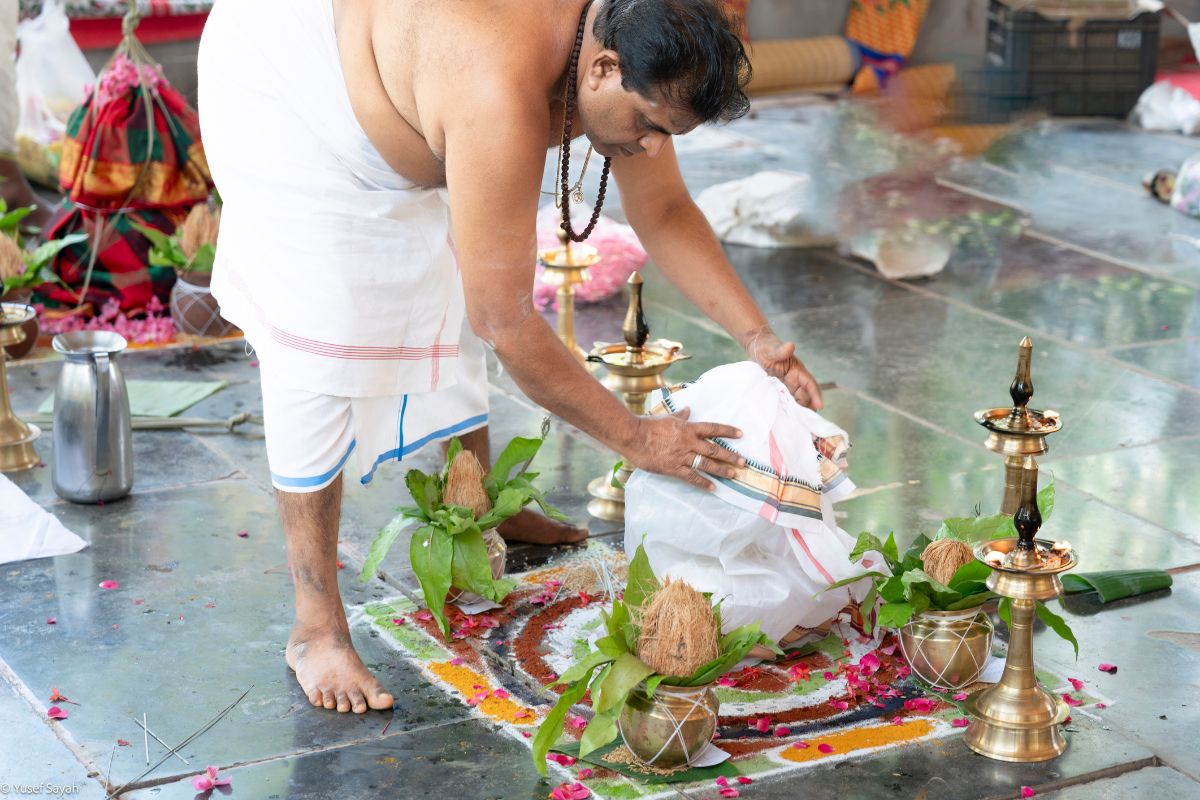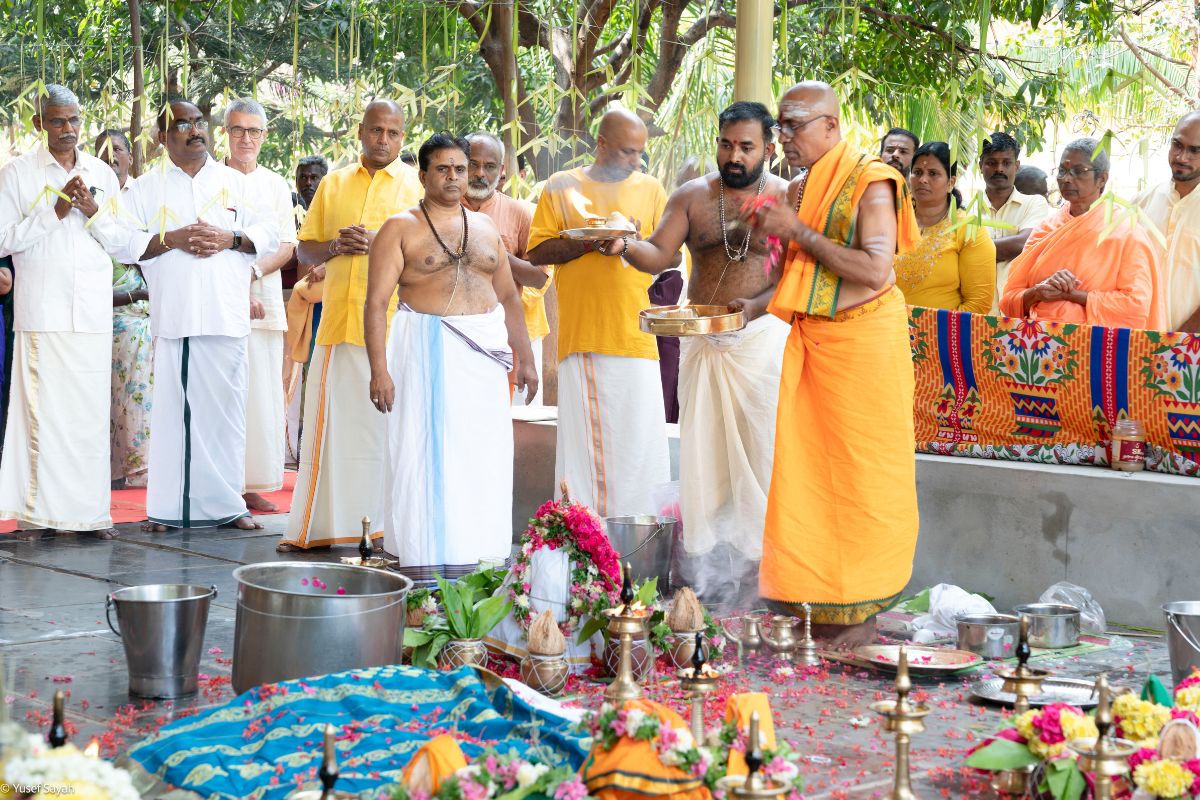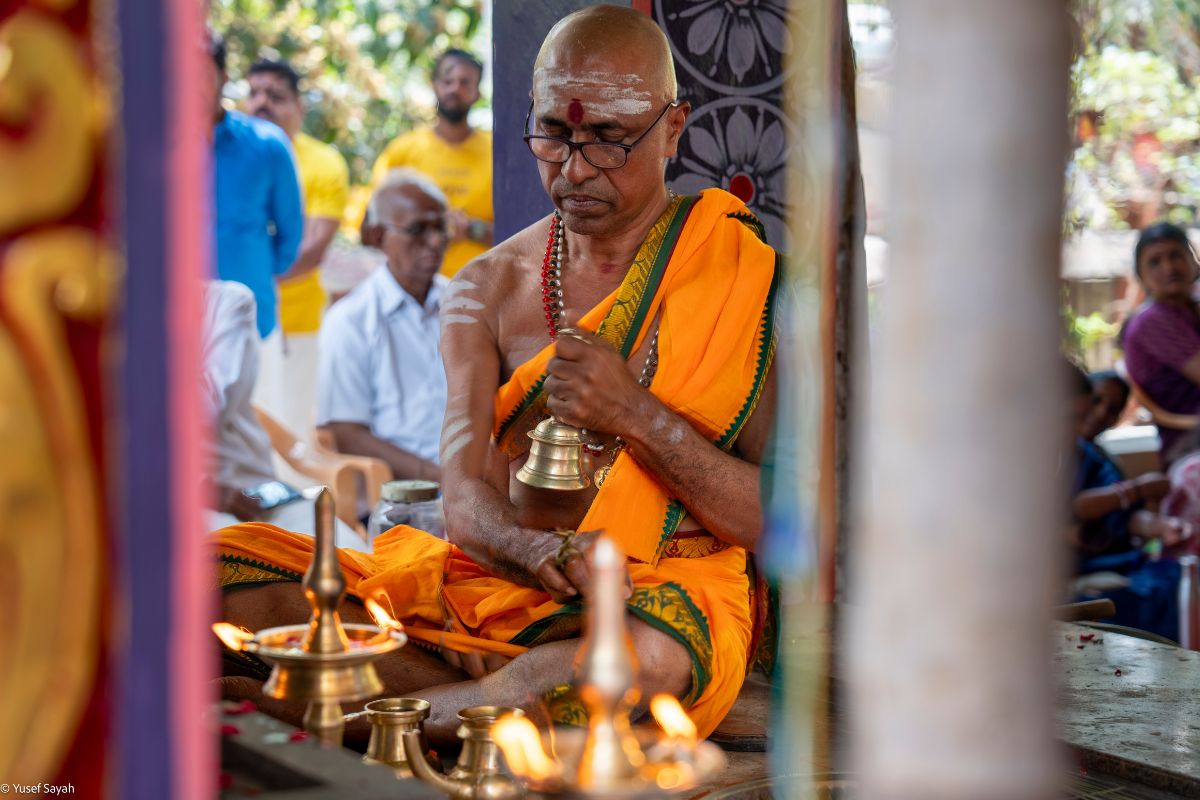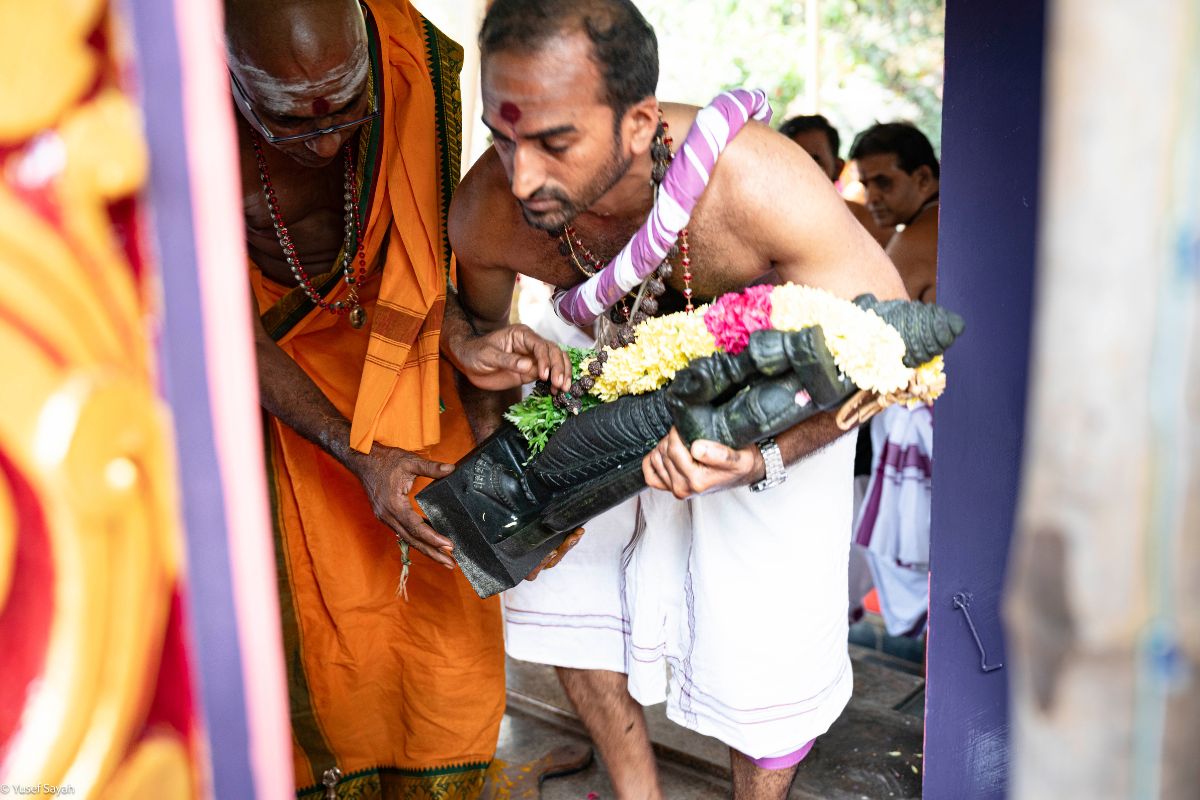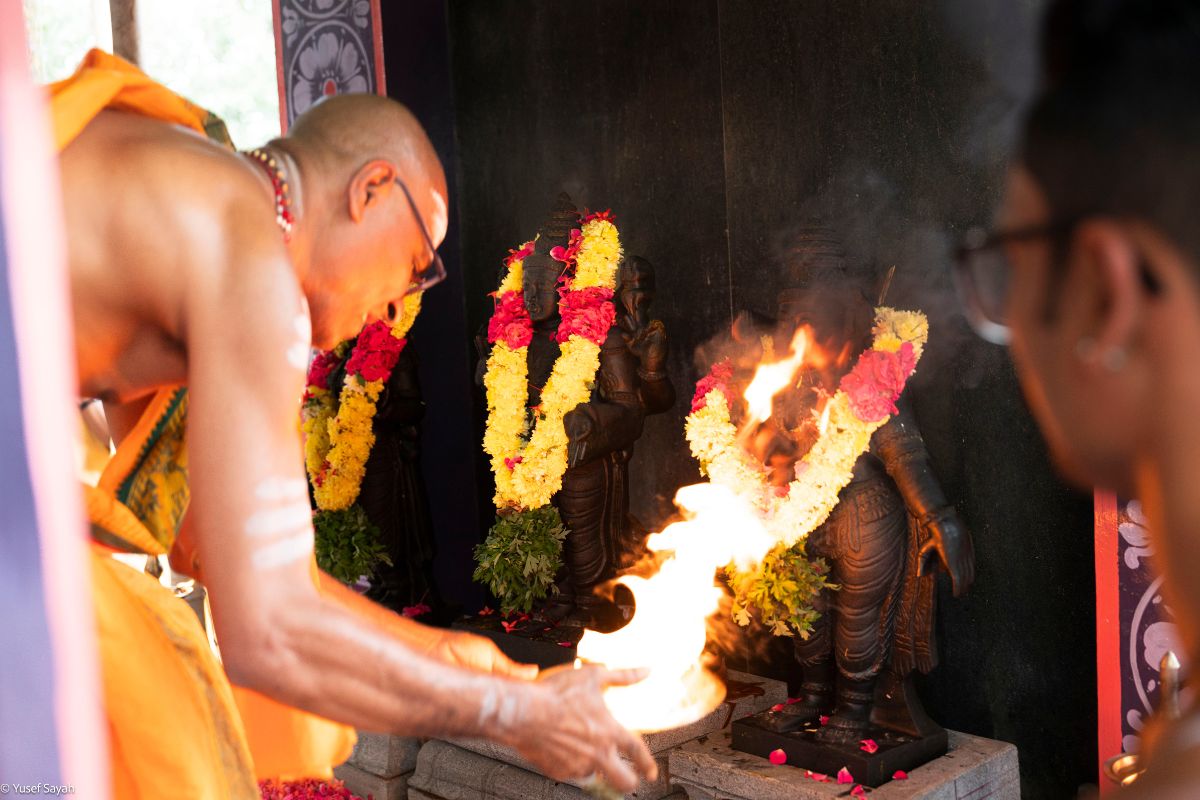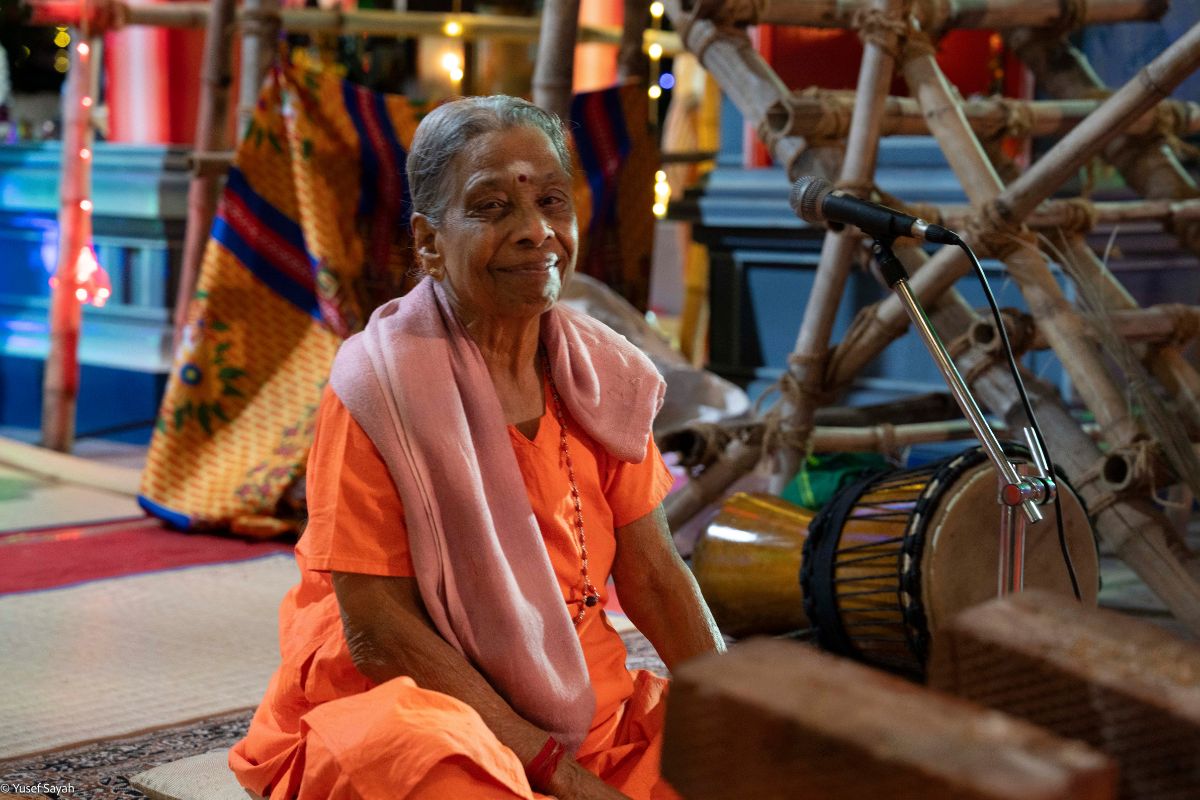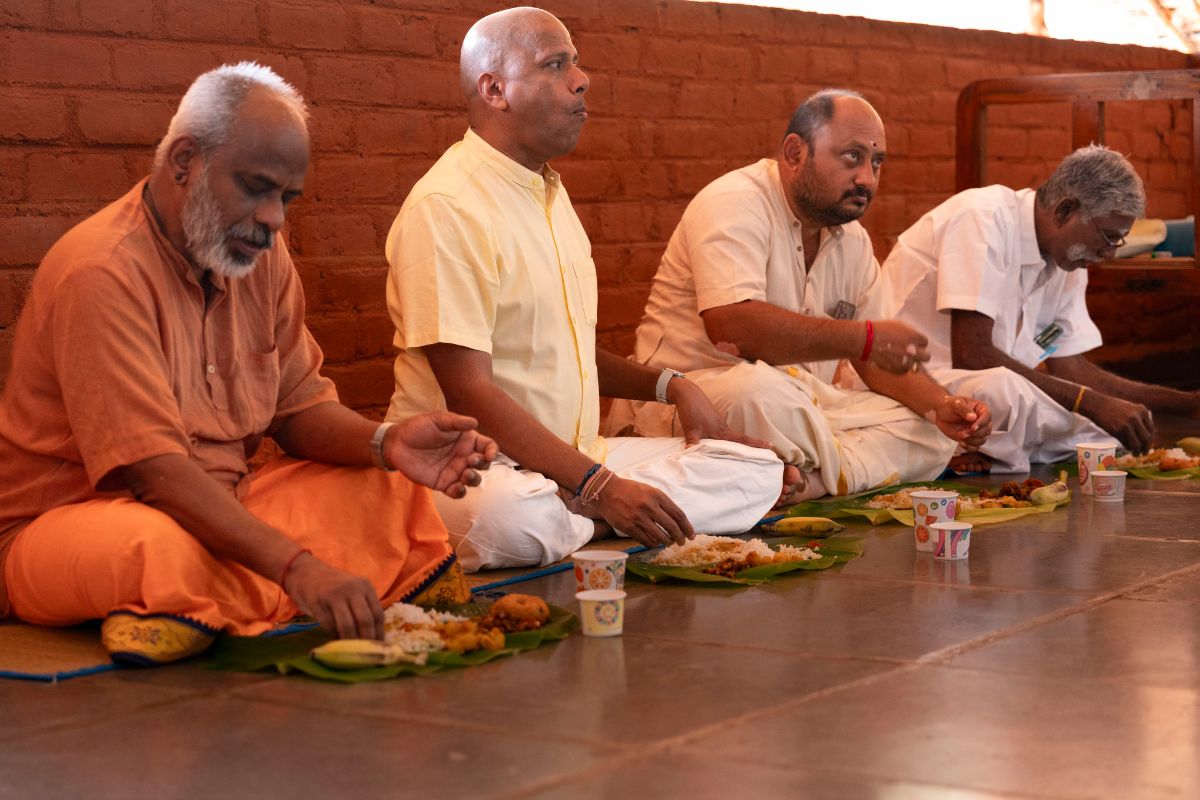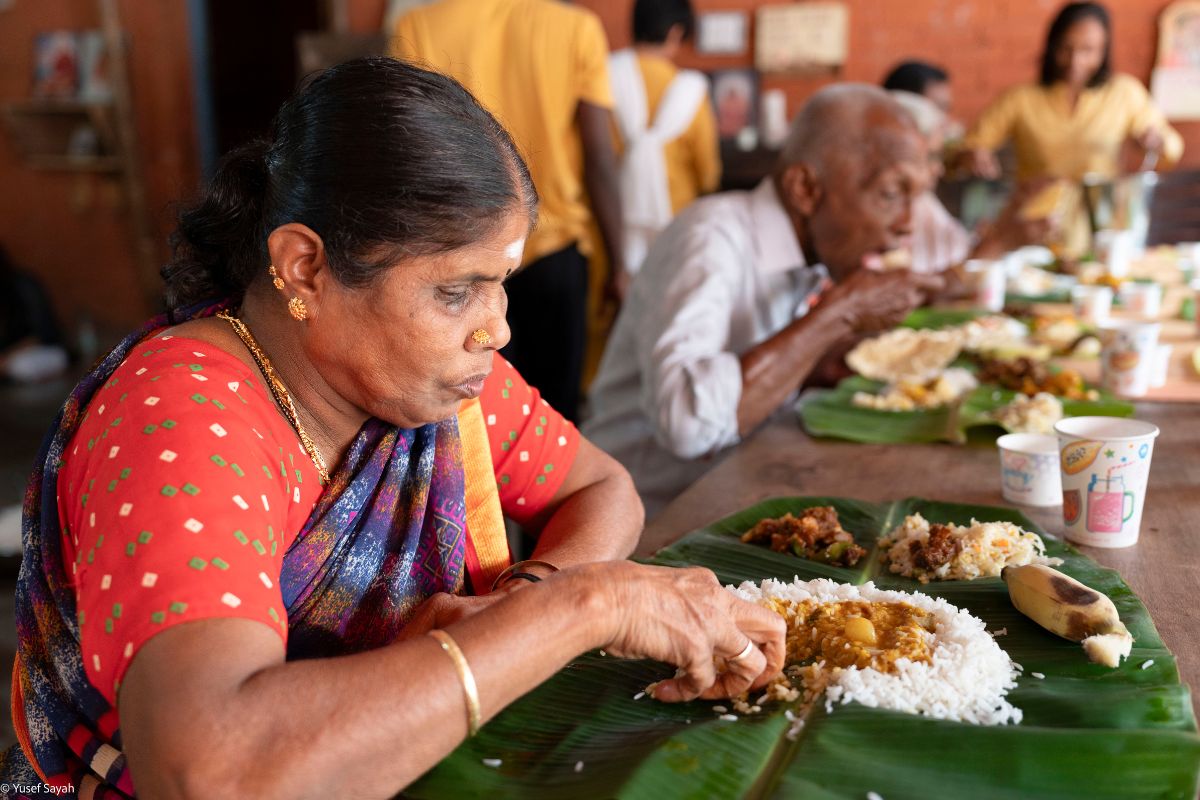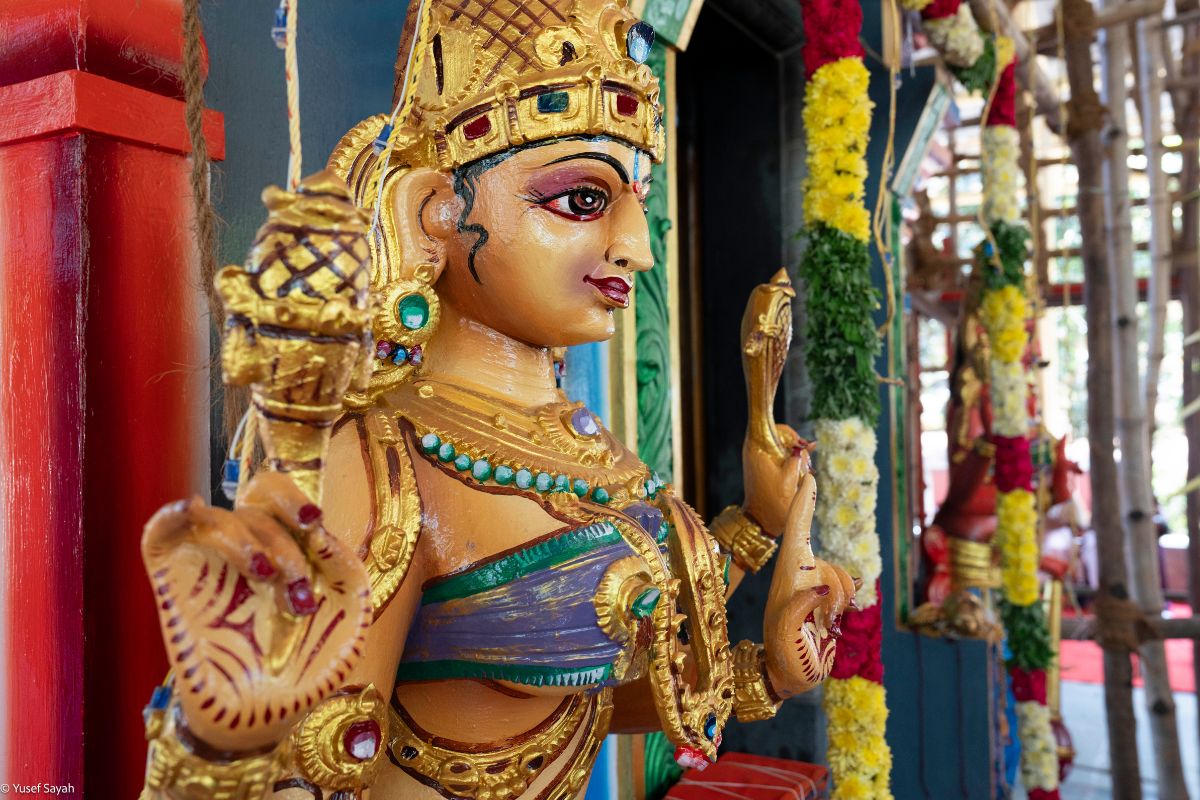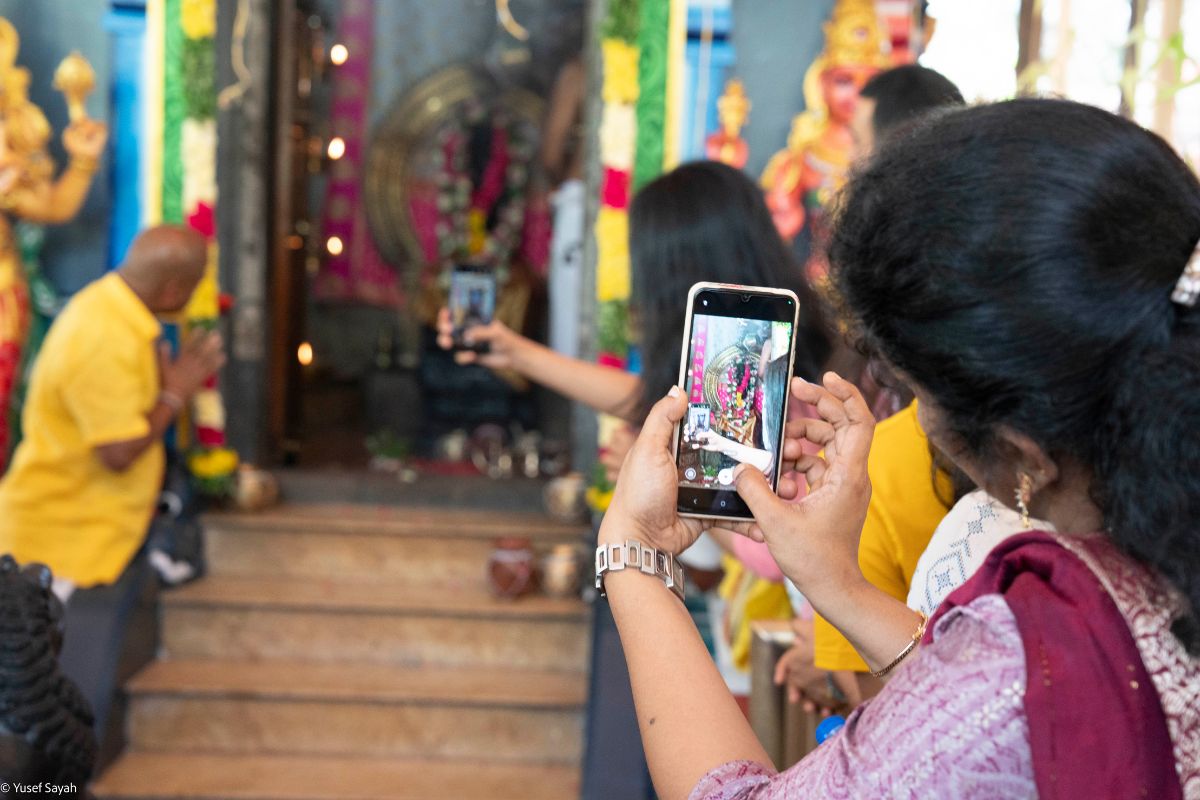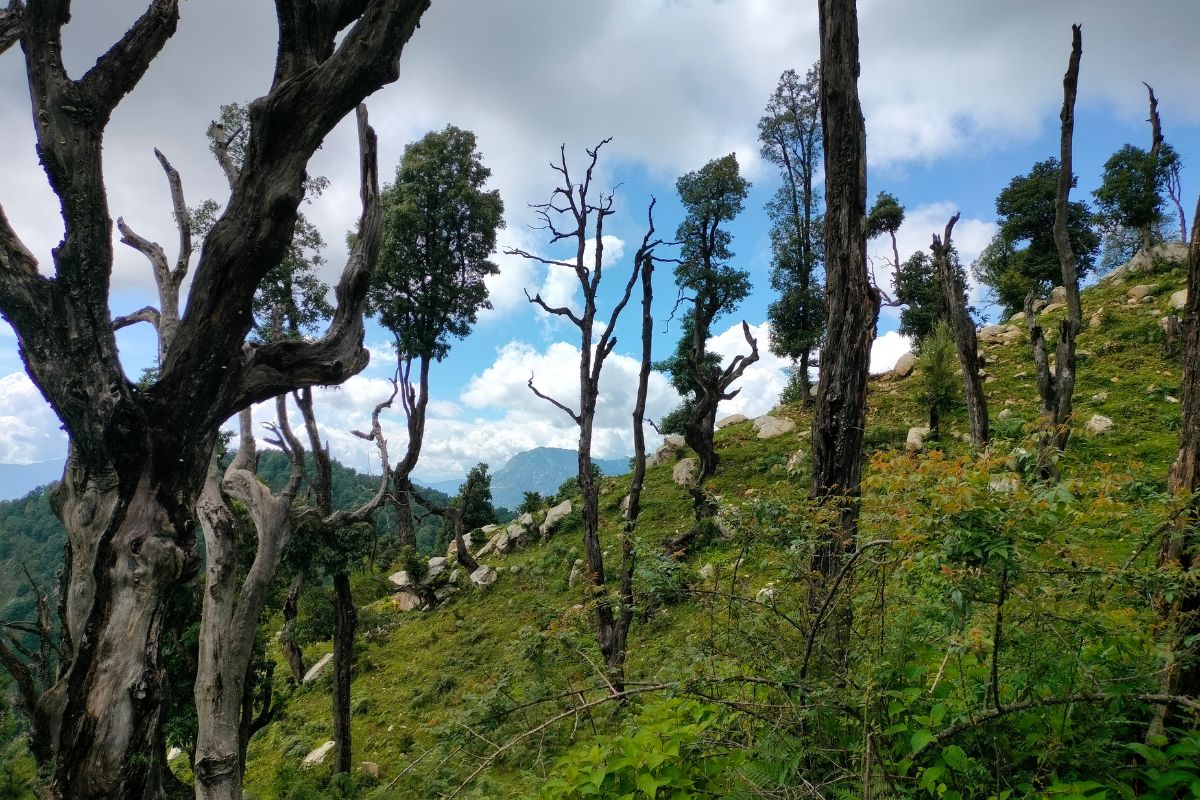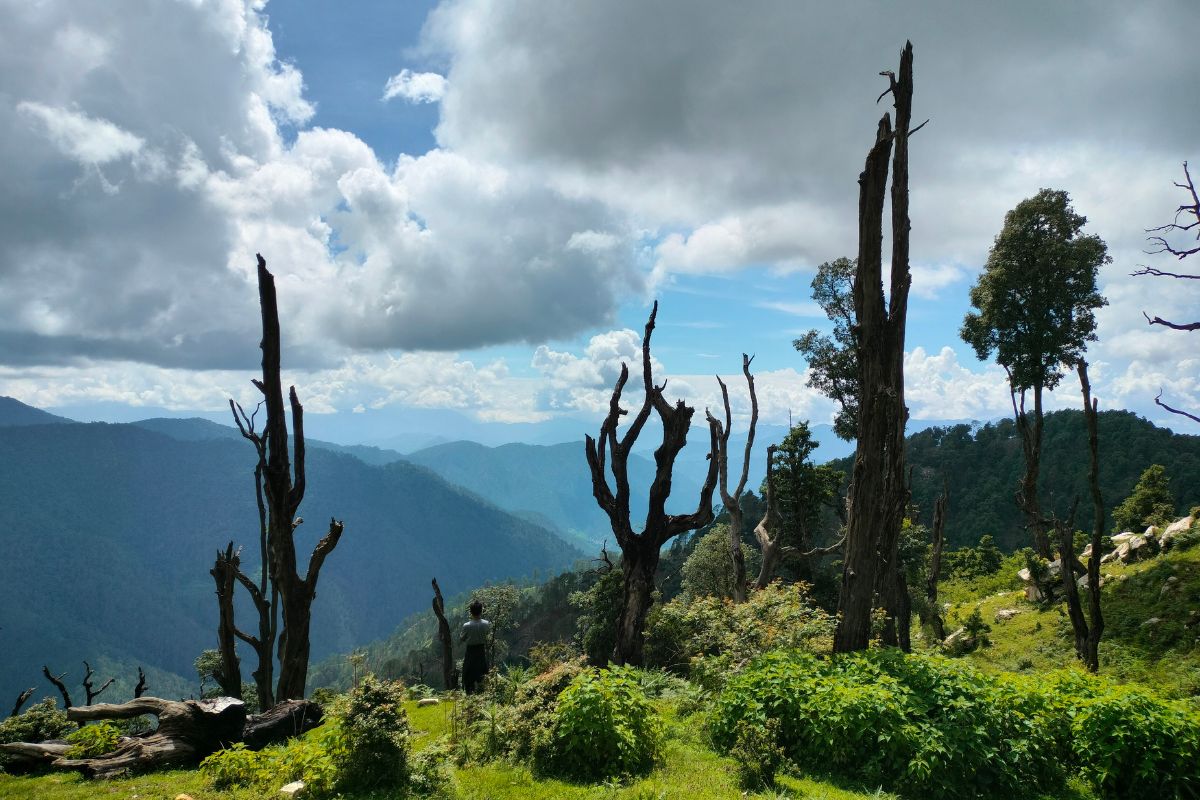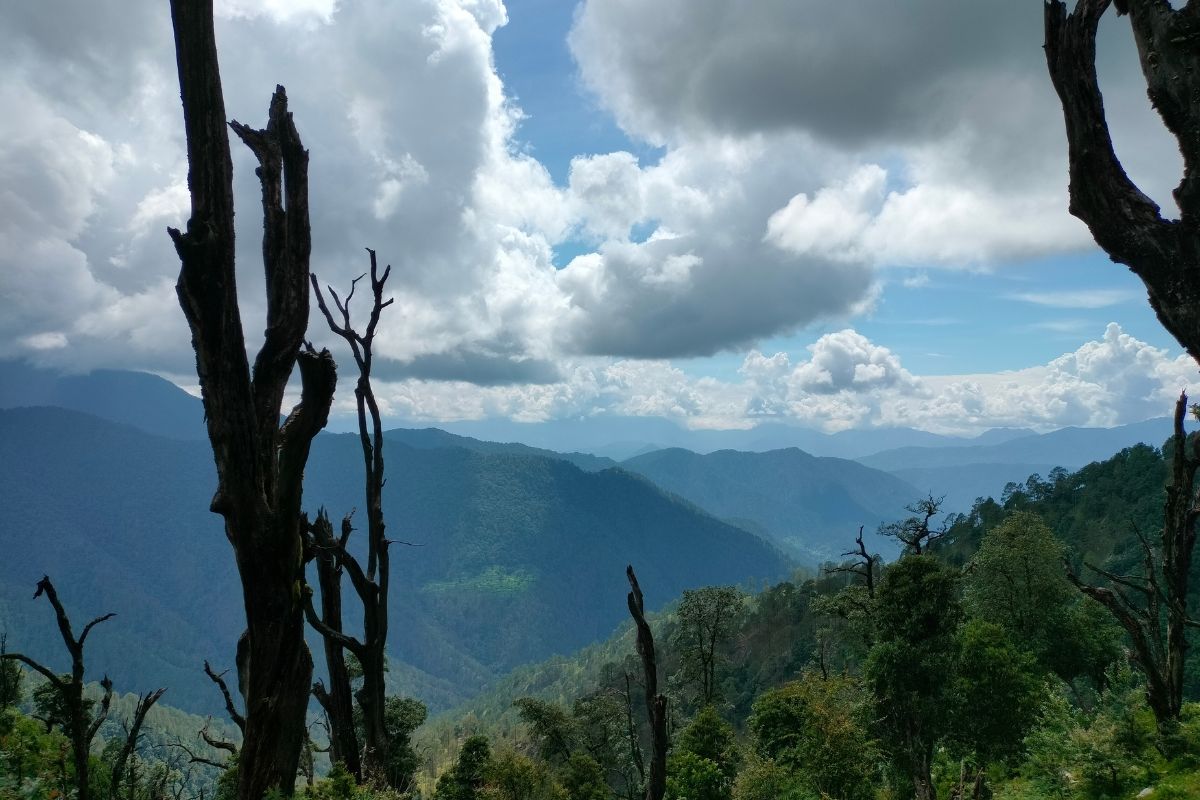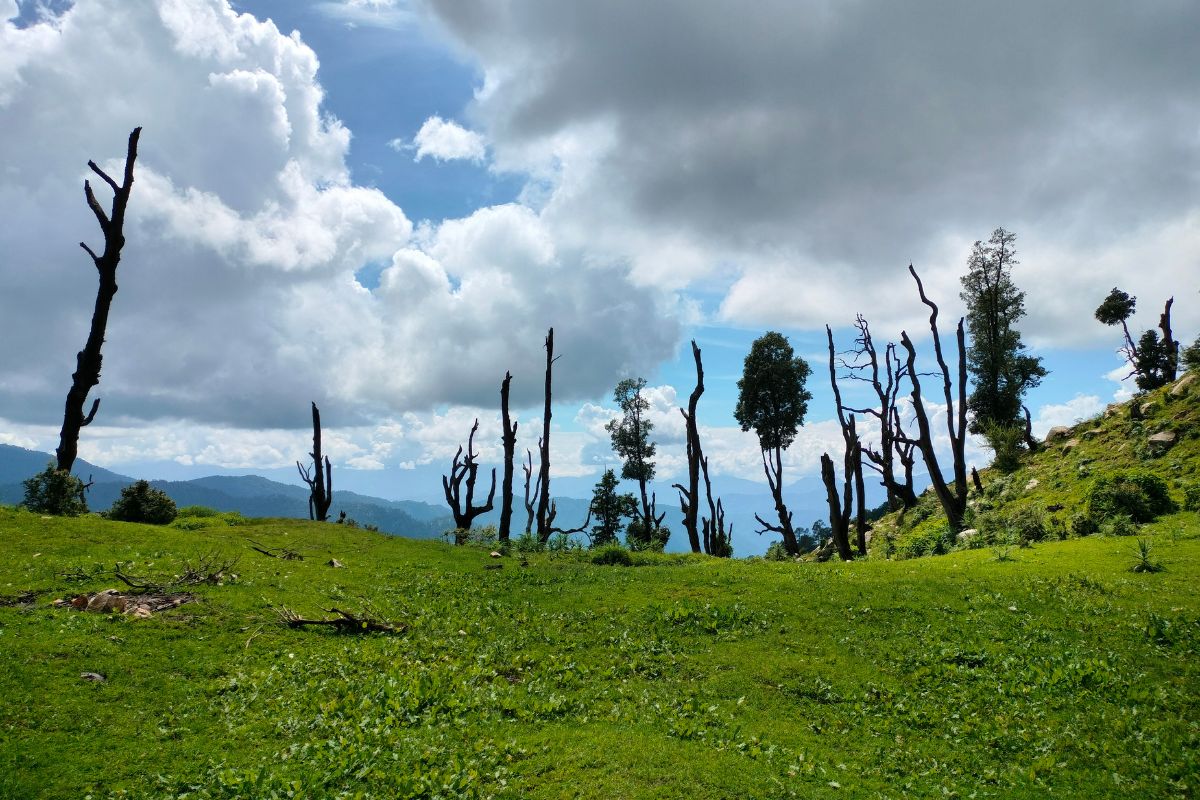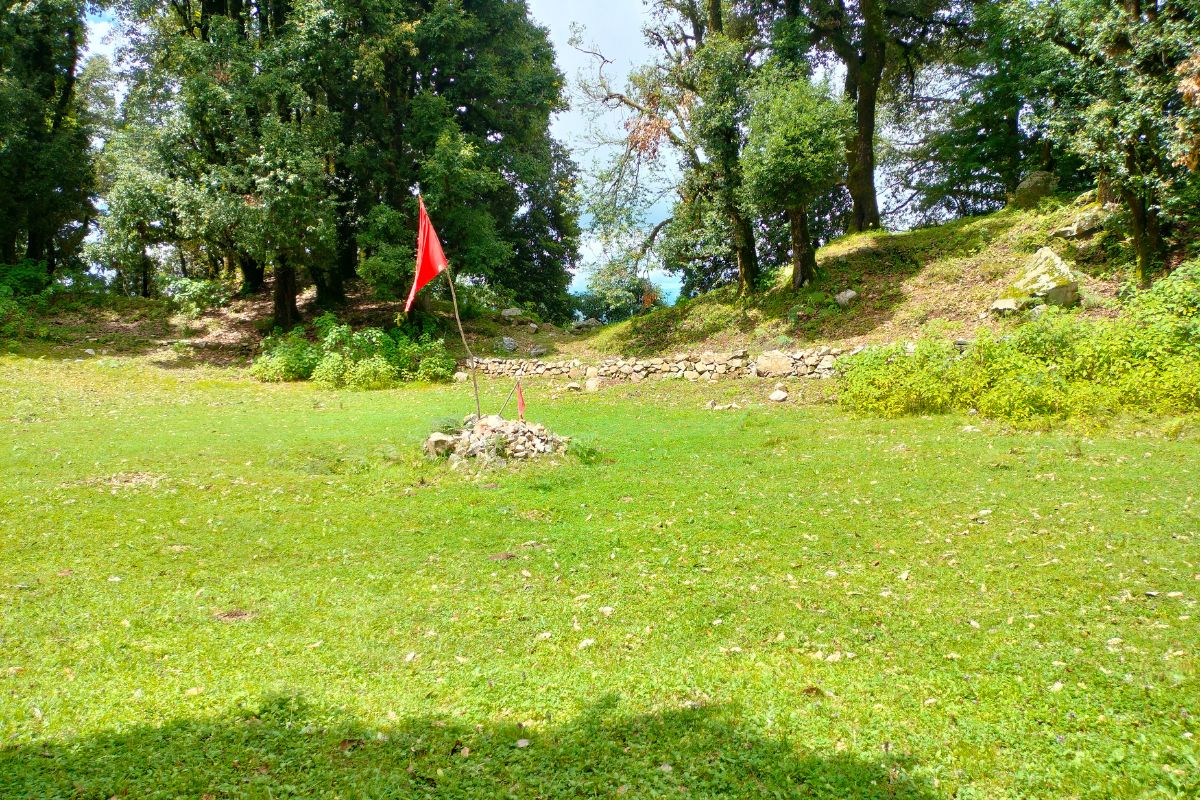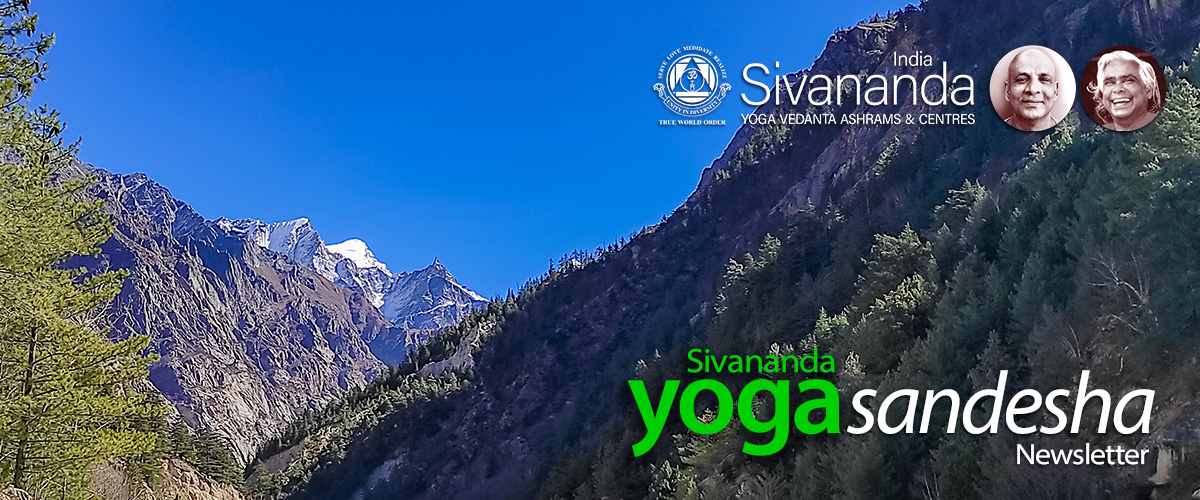
Om Namah Sivaya
Blessed Self,
By the grace of Master and Swamiji this season we have a high number of Yoga Vacation guests. Course numbers remain very low due to visa issues with the Indian embassies around the world, however, we hope for this situation to improve soon. We are inspired with the success of our Mahakali Temple Kumbabhishekam at the Madurai Ashram, with over 550 people in attendance. We humbly thank all the donors who have sponsored different aspects of the project. The temple now has a new roof, with a new floor yet to come, and a monkey-proof fence all around.
May Master and Swamiji’s blessings be with you always.
Pranams,
Sivananda Yoga Vedanta Ashrams & Centres, India
Photo by Jan-Peter Lahall, lahall.com
One of the niyamas, or observances of Patanjali’s Ashtanga Yoga, or Raja Yoga is Tapas. Generally translated into English as austerity, it has various implied meanings: internal or cosmic heat, asceticism, self-discipline, self-denial, penance. It’s highest purpose is to control the mind, realise the self, and, of course, to achieve liberation. Tapas is a way to develop spiritual discipline, purify the body and mind, strengthen willpower, cultivate maturity, deepen meditation, and discover inner strength.
Tapas is an important concept in Hinduism, appearing as early as the Rig Veda as the origin of the universe. God, saints and sages, and everyday folks like us all practice tapas. The Bhagavad Gita in Chapter 17 gives a detailed coverage to Tapas, as a self-discipline of the body, speech, and mind. The texts are full of stories of individuals who have gained various siddhis or psychic powers due to their practice of tapas. In Raja Yoga it is said that all kleshas, or afflictions, and impurities of the mind are destroyed.
The good news is that the practice of tapas can start small. A small act of discipline such as not taking sugar in tea can be a way to start. Fasting is certainly tapas. Don’t make the mistake of thinking that life becomes dry and yeastless for one cultivating austerity. A great spiritual strength and confidence in oneself can result from these small acts of self-control and control of the senses.
In this issue of Yoga Sandesha we explore tapas through fasting, learning to float in water, and the story of Nachiketa Tal, a place named after a young boy with the self-discipline and patience to ask for the truth of life above all else.
Thank you for taking the time to read Sivananda Yoga Sandesha. We hope you enjoy the newsletter and find an opportunity for reflection. As usual, please feel free to reach out to us with your thoughts and feedback: [email protected]
Photo Update:
Mahakali Temple Kumbhabhishekam at Madurai Ashram
Kumbhabhishekam was conducted on February 26, 2024 at the Madurai Ashram. Kumbabhishekam is a consecration ceremony traditionally performed after 12 years of the temple installation in 2012. The rituals started with a Ganapati Homa and several pujas to appease the Goddess spread over 3 days and culminating with the final Abhishekam with water on the summit of all the temples. We also installed new statues of Lord Subramanya accompanied by his wives Valli and Devayani on both sides, inside the temple, and of Naga, the snake god, outside the temple premises, as per the Vastu guidelines.
The pujas and rituals were presided over by Yoga Acharya Prahlada ji and conducted by five priests from Kerala, along with our temple priest. Some of our trustees, including Dr. Narayanasami ji, instrumental in starting the Madurai Ashram, ATTC students from Neyyar Dam, TTC students from Gudur Ashram, and senior staff took part in the celebration. Thagur ji from Canada was in attendance to oversee the painting work, local leaders, 50 nurses and others from Vikram Hospital rounded-out a crowd of 550 people.
Swami Gayatriyananda ji sponsored the painting of the temple and new statues. The temple now has a new room and compound wall. New granite flooring is yet to be installed, sponsored by Mr. and Mrs. Mamallan.
Here are some photos of the auspicious event.
Research/Links
Your Brain Doesn’t Want You to Exercise
New research suggests that our brains are wired to be sedentary and don’t really want us to exercise. From an evolutionary perspective, burning extra calories through exercise would not be wise. We have an evolutionary instinct to conserve energy and to take the escalator rather than the stairs. Read more about how to trick your brain into exercising:
https://time.com/6590020/why-its-so-hard-to-motivate-yourself-to-exercise/
Spiritual Calendar
March 6 – Ekadasi
March 8 – Maha Sivarathri
March 10 – New Moon
March 20 – Ekadasi
March 25 – Full Moon
March 26 – Holi
Upcoming Courses:
Learn, Practise & Grow with Us!
Teachers’ Training Course (TTC)
- Mar 17 to Apr 13, 2024,
Neyyar Dam, Kerala - Mar 17 to Apr 13, 2024,
Baddi, Himachal Pradesh - Apr 7 to May 4, 2024,
Uttarkashi, Himalayas
For more details, click here
Mindful Sadhana & Self-Development (ONLINE)
- Module 3: Subtle,
Mar 11 – 16, 2024
For more details, click here
TTC Refresher Course
- Mar 18 to 23, 2024,
Madurai Ashram
For more details, click here
Adapted Sivananda Yoga Course (ONLINE)
- April 2 to April 9, 2024
For more details, click here
Advanced Teachers’ Training Course (ATTC)
- May 12 to June 6, 2024,
Uttarkashi, Himalayas
For more details, click here
Teachings Excerpt:
Tapas, by Swami Sivananda
Tapas—austerity of the mind and body—means that you should be able to bear heat and cold, physical discomfort and fatigue; as well as insult, injury, persecution and any sort of humiliation. You should always be able to keep your mind and the senses ever pure and carefully guarded. That which purifies the impure mind is tapas. That which regenerates the lower animal nature and generates divine nature is tapas.
That which pleases the mind and destroys lust, anger, greed is tapas. That which destroys tamas and rajas and increases sattva is tapas. That which steadies the mind and fixes it on the eternal is tapas. That which arrests the outgoing tendencies is tapas. Desire moves the senses. Desire can be controlled only if the senses are curbed. That which destroys desires, egoism, likes and dislikes and generates dispassion, discrimination and meditation is tapas.
Tapas is of three kinds: physical, verbal and mental. Physical Celibacy, service of guru and saints, practice of non-violence are some of the practices of tapas for the body. Verbal To speak the truth, to observe the vow of silence, not to hurt others by unkind or harsh words, to speak words that are beneficial and to study the scriptures are all tapas of speech. Mauna is verbal tapas. Exercise control over speech through vigilance and discipline. Mental This tapas is more powerful than physical tapas.
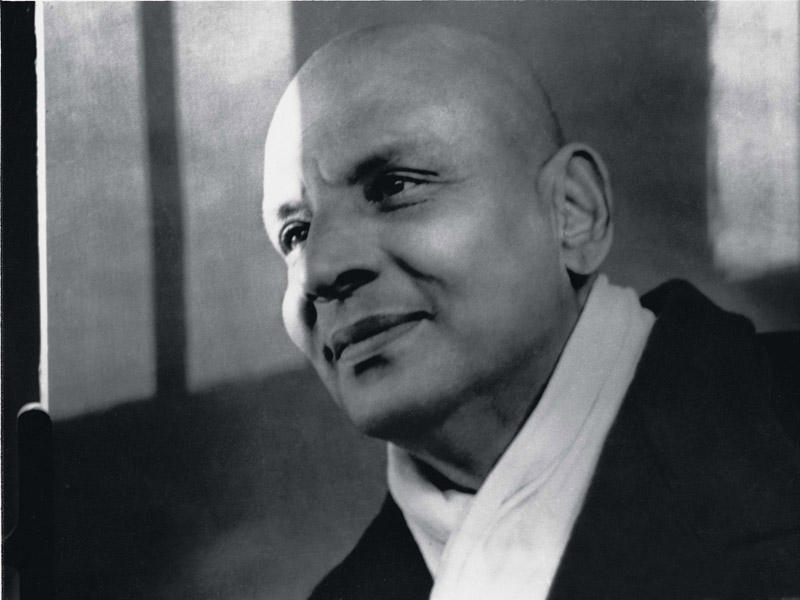
He who bears heat and cold does physical tapas. He increases his power of endurance, but he may not be able to bear insult, he will be easily upset by a harsh or unkind word, he may take revenge and do ‘tit for tat’. He has no control over the mind, he has disciplined only the physical body. To keep a balanced mind in all conditions of life, to bear insult, injury and persecutions, to be ever serene, contented and peaceful, to be cheerful in adverse conditions, to have fortitude in meeting danger and to have presence of mind and forbearance are all forms of mental tapas.
Poise, mental restraint, purity of nature, one pointedness of mind, mental happiness, cheerfulness and cleanliness of life are all tapas of mind. Philosophically, meditation is the highest form of tapas. Fixing the wandering mind on God or Brahman is great tapas. Enquiry and deep meditation are the highest tapas. Sense control, pranayama, concentration and samadhi, practice of contentment, peace, enquiry and company of the wise, the nine modes of bhakti and yama and niyama are great tapas.
The tapas performed by those with the utmost faith, without desire for fruit and harmonised, is sattvic or pure. That practised with the object of gaining respect, honour and worship and for ostentation is rajasic, unstable and fleeting. That done under a deluded understanding, with self-torture or with the object of destroying another is declared to be tamasic or of darkness.
By tapas the mind, speech and senses are purified. Fasts and all religious observances that are laid down in scriptures and the rules of yama and niyama, asana, pranayama etc. come under tapas. Manu says ‘He whose speech and mind are pure and ever carefully guarded obtains all the fruits that are obtained by means of vedanta. By the performance of tapas, all afflictions and impurities can be destroyed.’
Teachings Excerpt:
Meditation and Mantras, by Swami Vishnudevananda
The (Niyamas) observances are (the practice of) internal and external purity, contentment, mortification, study of scriptures, and worship of God or self-surrender.
YS 2, v. 43 Kayendriya-siddhir asuddhi-ksayat tapasah
The destruction of impurities through austerities brings about powers to the body and senses.
When austerities, self-imposed disciplines are practiced, great will is developed, and the abilities of the physical body and senses are extended beyond what is considered normal.
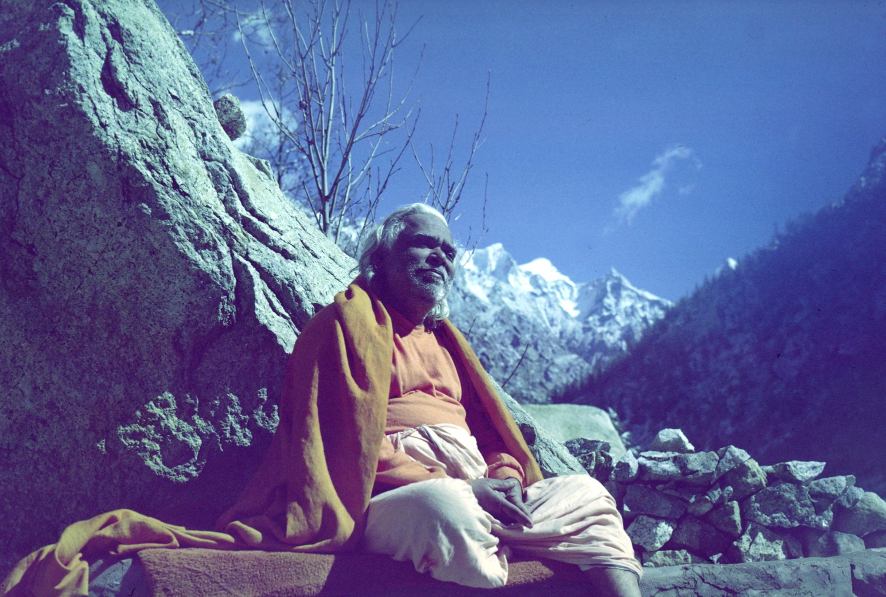
Practice and Teaching Tips:
Tapas & Floating in Water – Padma Matsyasana
A traditional form of Tapas, or austerity, was called Jala Stambham. Jala meaning water and stambha meaning to stop. Yogis would float unmoving on the water or remain underwater unmoving and holding the breath for long periods of time. It represented a control over the water element and also a control over the senses.
Tapas in general was practiced by almost all Yogis, Rishis, and sages in ancient times. Years of Sadhana or spiritual practices would be undertaken to prepare for Jala Stambham.
For us, we can get a sense of the grace and stillness of floating in the water while practicing Padma Matsyasana, the fish in full lotus. Here are some tips for practicing on land, or in the water. Give it a try if you have access to a lake or a pool. Pro tips: to float you must first learn to relax completely, and be a strong swimmer or have someone to help you into the posture!
Best wishes for your practice. Pranams.
Nutrition Tips:
What Can I Have While Fasting?
Are you on a never-ending search for a diet that helps you slow down ageing, makes you lose weight and feel lighter, improves skin health, improves energy levels and immunity, and helps induce feelings of calm? According to Ayurveda, the best solution to attain all of this does not lie in finding the appropriate foods, but in abstaining from food, give eating a break, and focusing on fasting. Body is self-healing and given a break, it auto-heals itself in multiple ways.
The idea of fasting is not new and in most ancient traditions fasting has been practised for improving health, optimizing body functionality, and rejuvenating the organ systems. It is a known fact that digestion consumes huge energy and in the case of regular difficult digestive processes, the body’s healing capabilities are compromised. During the process of digestion, the blood flow gets redirected to digestive organs which steals away the blood circulation from the areas that need healing. Thus, giving a break to digestion is a huge potential for the body to get back to healing processes. Further, to keep digestion healthy in the long run, it is important to make food choices that are digestion friendly.
Kinds of Fasts and Food Choices
Liquid Fasting:
Liquid fasting is intense fasting and mostly practised by people who already are in a state of great health. Following liquids and fluids can be consumed during this fast.
- Warm water helps hydrate the body.
- Herbal teas help hydrate, cleanse, and provide minerals.
- Infused water helps detoxify and provides a host of vitamins and minerals.
- Lemon water induced the liver’s capability to detoxify.
- Clear vegetable soups help provide nutrition and help cleanse the body.
- Juices help detoxify and mineralize the body.
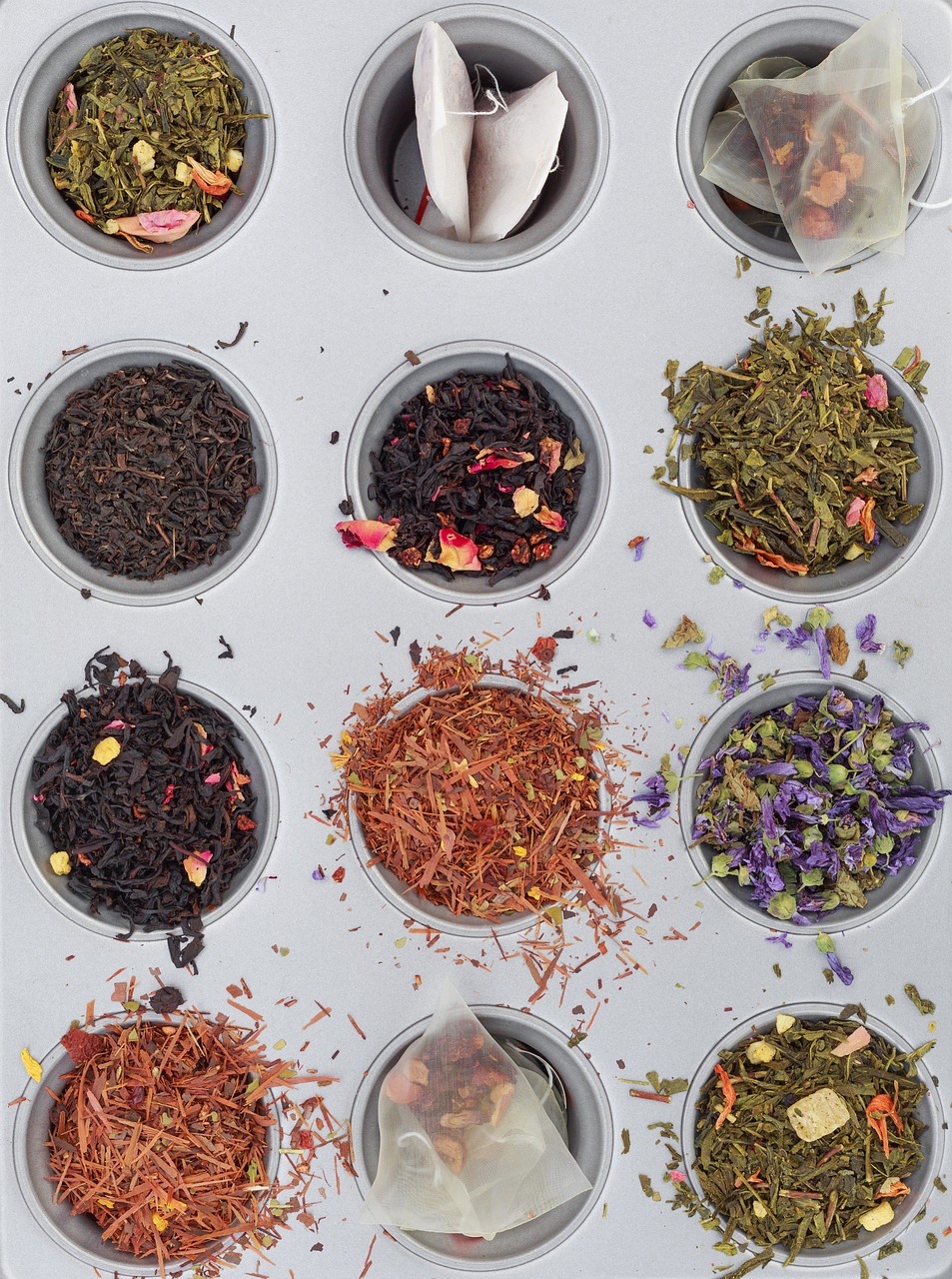
Intermittent Fasting:
Most ancient traditions have always suggested having an early dinner, keeping a gap of at least 3 hours between bedtime and dinner and following cleansing morning practices before consuming breakfast. This pattern inherently includes the concepts of intermittent fasting! Intermittent fasting can be followed keeping the eating window anywhere from 8, 10 or 12 hours and fasting rest for a number of hours. The choice of right foods during intermittent fasting helps the effects of fasting to be attained at a different level. The following foods can be focussed-on during intermittent fasting.
- Whole Grains are a source of complex carbohydrates, ideal for the body’s energy needs and provide steady source of energy. Consumed in moderation, these foods do not cause blood-sugar fluctuations and insulin spikes. Sources include brown rice, millets, buckwheat, amaranth and oats.
- Beans and lentils are a great source of proteins and a variety included in diet each day ensures the consumption of complete proteins. Sources include kidney beans, chickpeas, and mung bean dal.
- Including 5-6 different servings of fruits and vegetables provides a host of vitamins and minerals.
- Nuts and seeds are a great source of good fats and proteins and serve well to satiate hunger cravings.
- Herbs and spices help enhance the taste of foods and are a great source of antioxidants.
Juice Fasting:
Juice fasting is a quick detoxification technique and can last from1-3 days maximum. Various combinations of alkalizing fruit and vegetable juices are consumed on a juice fast.
- Vegetables such as spinach, carrot, beetroot, lemons, and tomato are used for juicing.
- Fruits like apples, papaya, oranges, and watermelon are used for juicing.
- Water is consumed for hydration throughout the day.
- Coconut water provides deep hydration during juice fast.
- Herbal teas can be consumed during a juice fast.
Ayurvedic Fasting:
Ayurvedic fasting is a completely different approach to fasting. It is based on the premise that the body should be fed light, digestion-supporting foods during this fast. Simple foods that support an Ayurvedic fast include:
- Ginger tea with an optional concoction of various spices like cinnamon, coriander, fennel, cardamon & cumin is a staple during Ayurvedic fasting to keep the metabolic fire (agni) high that is supposed to burn the toxins.
- CCF (Coriander, cumin and fennel) tea is yet another staple in Ayurvedic fasting. It helps remove undigested matter from the body.
- Fats like ghee are highly supported in Ayurveda for their ability to lubricate the deepest body tissues.
- Khichdi, a special rice and yellow split mung bean porridge is highly favoured in Ayurveda during a fast as it is easy on digestion, provides energy and nourishes the body tissues deeply.
- Mung bean soup with vegetables, coconut milk, and a variety of spices is consumed as a staple during Ayurvedic fasting.
- Stewed apples and hot porridge made with oats are yet another preferred food choices during an Ayurvedic fast.
Location Showcase:
Nachiketa Tal, Uttarkashi
Nachiketa Tal, located in the Himalayas, India, about 30 km from our Netala Ashram, is a high-altitude beautiful lake with snow-peaked mountains overlooking it. Nachiketa Tal holds a legendary mythological relevance. Situated at an elevation of around 3,022 meters above sea level, Nachiketa Tal has become a popular tourist destination for trekkers and spiritual seekers seeking a natural environ, spiritual vibe and solitude. Lush green oak and pine trees surround the serene lake offering a breathtaking view amidst the serenity of the Himalayas. The trekkers and travel enthusiasts are required to pass through challenging routes experiencing stunning landscapes with a wide variety of flora and fauna, dense pine and rhododendron forests to reach the pristine lake. A small Nag Devta temple near the lake keeps its religious vibe strong. The temple is worshipped by nearly villagers especially on Nagpanchami for a holy dip in the lake. In winters the scenic view of the lake is all covered in the snow while in summers the valley basks amidst the blossoms of colourful wildflowers and lush green woods.
The lake inherits its name from ‘Nachiketa’, a legend from Hindu mythology known for choosing the path of spirituality with his wisdom, dedication, self-knowledge and single-mindedness. The legend goes like Nachiketa, son of sage Uddalaka, confronted Yama, the god of death, and got enlightened about the cycle of life and death and the state of self-realization of the soul.
Nachiketa’s father performed a yajna and took a vow to sacrifice all his material possessions for spiritual attainment. However, he decided not to sacrifice his family. Nachiketa was hurt with the insincerity of his father, who had taken a vow to give up everything, but kept his favourite possessions with him while giving away the possessions that he found irrelevant. Nachiketa confronted his father with his wisdom, and asked whom would his father give him to? His father said in anger, to the Yama. Being a sincere child, Nachiketa went to Yama but couldn’t meet him. He waited for Yama without food and water at Yama’s doorstep. On seeing Nachiketa’s sincerity to meet him, Yama granted Nachiketa three boons. In the first boon, Nachiketa requested material possessions and king status for his father. In the second boon he requested knowledge about karmas and yajnas that he had to do to attain liberation. In the third boon Nachiketa requested Yama about the secret of death and what happens after death. Yama refused to answer and in return offered all pleasures of the material world in his third boon. Nachiketa confronted the Yama asking what he will do with them when all is transient and meaningless. He stayed with his original question to Yama, to which Yama replied, “Even the gods do not know the answer to this question”. Nachiketa was still adamant about moving away from his question. Yama went and tried avoiding the young boy, but Nachiketa stayed around on Yama’s doorstep until he attained full enlightenment and dissolved himself to get the answers for everything he sought to know. The legend is symbolic of the intensity, craving and one-mindedness Nachiketa displayed in attaining spiritual enlightenment at a young age.
These photos were taken last summer at Nachiketa Tal. In one photo you can see a flag marking a hole in the ground, and portal to Yama’s realms, where Nachiketa is said to have waited.
“Tapas—austerity of the mind and body—means that you should be able to bear heat and cold, physical discomfort and fatigue; as well as insult, injury, persecution and any sort of humiliation.” -Swami Sivananda


